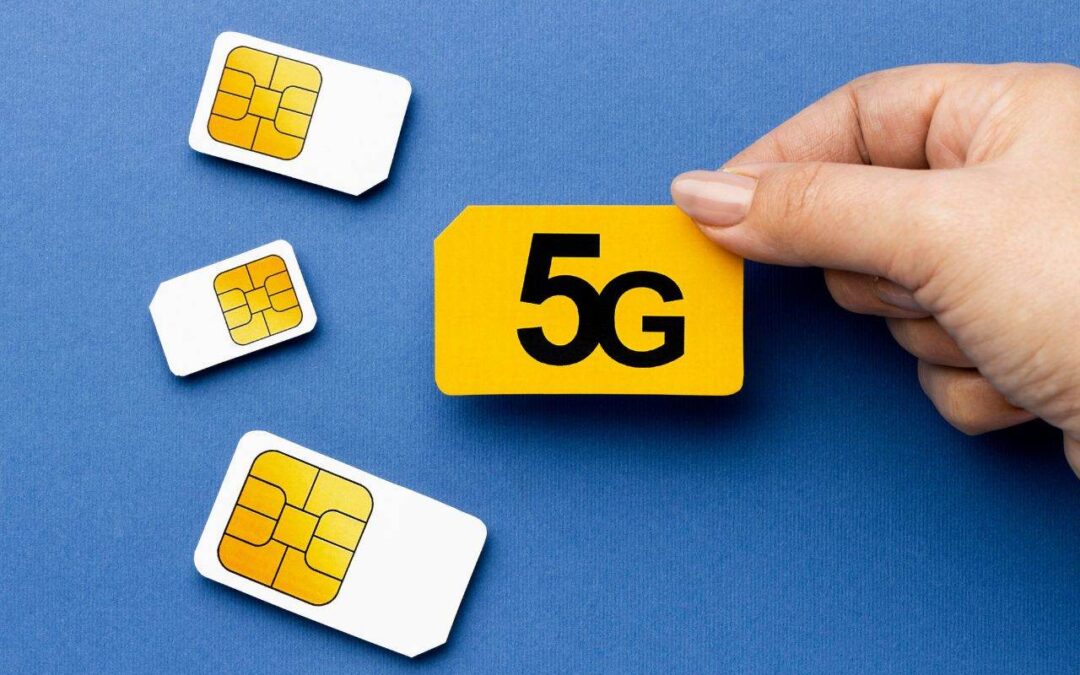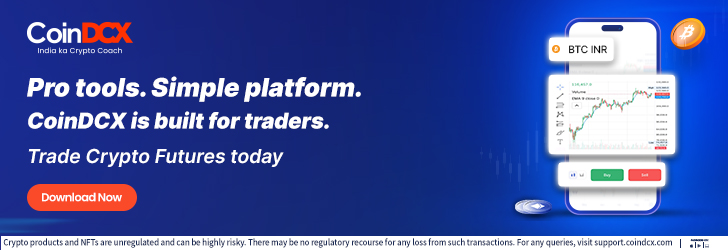Vietnam has become one of the hottest solo travel destinations in Southeast Asia, attracting adventurous travelers with its stunning landscapes, rich culture, and budget-friendly prices. From the bustling streets of Ho Chi Minh City to the peaceful rice terraces of Sapa, solo explorers are discovering what makes this country so special.
But traveling alone in a foreign country brings unique challenges that require smart preparation. Staying connected isn’t just about sharing photos on social media – it’s your lifeline for safety, navigation, and peace of mind. When you’re exploring Vietnam’s winding alleyways or remote mountain villages by yourself, having reliable internet access can make the difference between a smooth adventure and a stressful situation.
Traditional connectivity options like international roaming or hunting for local SIM cards at airports often create more problems than they solve. Expensive daily fees, language barriers, and unreliable coverage can turn your dream trip into a communication nightmare. That’s where modern eSIM technology steps in to provide a simple, cost-effective solution that keeps you connected from the moment you land.
Challenges of Solo Travel in Vietnam
Solo travel in Vietnam presents unique obstacles that require preparation and reliable connectivity solutions. Understanding these challenges helps you pack the right tools and mindset for a successful adventure.
Navigating Unfamiliar Cities and Rural Areas
Vietnam’s cities can overwhelm first-time visitors with their energy and complexity. Hanoi’s Old Quarter features narrow streets that twist and turn without clear patterns, while Ho Chi Minh City’s districts blend together in ways that confuse even experienced travelers. GPS navigation becomes essential when street signs use Vietnamese script and locals may not speak English.
Rural areas like Ha Giang Province or the Mekong Delta present different navigation challenges. Mountain roads wind through spectacular scenery but offer few landmarks for orientation. Rice paddies and small villages can look similar, making it easy to lose your bearings without digital maps.
Public transportation adds another layer of complexity. Bus routes change frequently, and motorcycle taxi drivers may not understand your destination unless you can show them on a map app. Having reliable data access means you can navigate confidently and avoid getting stranded in unfamiliar areas.
Language Barriers and Real-Time Translation Needs
English proficiency varies significantly across Vietnam, with tourist areas offering better communication options than local neighborhoods or rural regions. Even in cities, ordering food, asking for directions, or handling emergencies can become challenging when language barriers arise.
Translation apps provide instant solutions for common communication needs. Point your camera at menu items to see English translations, or use voice translation to have conversations with locals who want to help but don’t share your language. These tools work best with reliable internet connections that traditional roaming can’t always provide affordably.
Medical situations, transportation problems, or legal issues become significantly more stressful when you can’t communicate clearly. Having instant access to translation services through your phone can turn potentially dangerous situations into manageable inconveniences.
Staying Safe as a Solo Traveler
Solo travel safety depends heavily on communication capability and access to information. Vietnam is generally safe for solo travelers, but situations can arise where quick communication becomes crucial for your wellbeing and peace of mind.
Motorbike accidents, sudden illness, or getting lost in remote areas require immediate access to emergency services or travel insurance support. Family members back home also worry more when they can’t reach you regularly, especially if you’re exploring off-the-beaten-path destinations.
Weather emergencies like typhoons or flooding can develop quickly in Vietnam. Having reliable internet access means receiving weather alerts, finding safe shelter, and updating loved ones about your status during natural disasters or unexpected situations. The U.S. State Department recommends that travelers maintain communication capabilities for safety purposes, especially when traveling independently.
Why Connectivity Matters for Solo Travelers
Reliable internet access serves as your digital safety net when exploring Vietnam independently. The peace of mind that comes from staying connected allows you to take calculated risks and explore more confidently.
Access to Emergency Contacts and Services
Emergency situations require immediate communication with appropriate services or support networks. Vietnam’s emergency number is 113 for police and 115 for medical emergencies, but having access to your travel insurance provider, embassy contacts, and family members provides additional safety layers.
Medical emergencies become particularly challenging when traveling alone. Being able to quickly research nearby hospitals, communicate with insurance providers, or video call family members for support can significantly improve emergency outcomes. Vietnam eSIM plans ensure you maintain this critical connectivity without worrying about expensive roaming charges.
Lost luggage, flight cancellations, or accommodation problems also require immediate communication with airlines, hotels, or booking platforms. Having affordable data access means you can resolve these issues quickly instead of hunting for Wi-Fi hotspots when you’re already stressed.
Real-Time Navigation and Local Recommendations
Exploring Vietnam solo means making constant decisions about where to go, what to see, and how to get there safely. Real-time access to maps, reviews, and local recommendations helps you discover amazing experiences while avoiding tourist traps or potentially unsafe areas.
Apps like Google Maps provide turn-by-turn navigation that adapts to traffic conditions and road closures. Local recommendation apps help you find authentic restaurants, cultural experiences, and safe accommodation options based on other travelers’ recent reviews and ratings.
Public transportation apps become essential for navigating Vietnam’s bus systems, train schedules, and ride-sharing options. Many of these services require data connections to function properly, making reliable connectivity crucial for getting around efficiently and safely.
Staying in Touch with Loved Ones
Regular communication with family and friends provides emotional support and safety assurance for solo travelers. Sharing your location, daily updates, and photos helps maintain connections with your support network back home while giving them peace of mind about your wellbeing.
Video calls allow you to share experiences in real-time and get advice when facing difficult decisions or challenging situations. The ability to communicate immediately during emergencies or when you simply need emotional support can make solo travel feel less isolating and more manageable.
Social media sharing also serves a safety function by creating a digital trail of your movements and activities. Friends and family can track your general location and itinerary through your posts, providing an informal safety net for solo adventurers.
How eSIMs Solve Connectivity Challenges
eSIM technology addresses the core connectivity problems that solo travelers face in Vietnam by providing affordable, reliable, and flexible internet access. Understanding how eSIMs work helps you appreciate why they’ve become essential tools for modern international travel.
Flexibility Without Physical SIM Cards
Traditional SIM card swapping creates multiple headaches for solo travelers. Airport vendors often charge premium prices, require extensive documentation, and may not speak English clearly. Managing multiple physical cards while carrying all your belongings solo adds unnecessary stress to your journey.
eSIMs eliminate these physical complications entirely. You can research and purchase plans before leaving home, activate them instantly upon arrival, and switch between different providers without handling tiny cards or special tools. This digital approach aligns perfectly with the minimalist mindset that many solo travelers prefer.
The technology also prevents the common problem of losing your original SIM card while traveling. Everything stays secure within your device’s digital storage, accessible through simple menu settings that you can manage anywhere with basic technical skills.
Cost-Effective Data Plans for Travelers
International roaming charges can easily exceed $200-300 for a two-week Vietnam adventure, especially if you rely heavily on navigation apps, translation tools, and communication with home. These costs often force solo travelers to limit their connectivity usage exactly when they need it most for safety and navigation.
eSIM plans typically cost 70-85% less than traditional roaming while providing more generous data allowances and better coverage. This affordability means you can use your phone naturally without constantly calculating the cost of each map search or translation request.
The predictable pricing structure helps solo travelers budget more accurately for their trips. No surprise charges, daily fees, or hidden costs that appear on your bill weeks after returning home. You pay upfront for exactly what you need.
Seamless Coverage Across Vietnam
Vietnam’s telecommunications infrastructure has improved dramatically in recent years, with strong 4G coverage in most urban and tourist areas. eSIM providers partner with multiple local networks, ensuring you get the best available signal in each region you visit.
Urban areas like Hanoi, Ho Chi Minh City, and Da Nang offer excellent connectivity that supports all your smartphone needs. Popular tourist destinations including Hoi An, Hue, and Nha Trang maintain reliable coverage for navigation, communication, and social sharing.
Even remote areas like the mountain regions around Sapa or the caves of Phong Nha provide adequate coverage for basic communication and emergency services. While speeds may be slower in rural areas, you’ll maintain enough connectivity for essential travel functions.
Simify: Your Trusted Partner for Vietnam Travel Connectivity
Choosing the right eSIM provider can make or break your solo travel experience in Vietnam. Simify has built its reputation by understanding the specific needs of independent travelers who can’t afford connectivity failures when exploring foreign countries alone.
Simify’s Vietnam-specific plans offer comprehensive coverage across the country’s major tourist routes and urban centers. Their partnerships with top local carriers ensure you get reliable speeds whether you’re exploring Ho Chi Minh City’s markets or trekking through northern mountains. The plans scale from budget options for basic connectivity to unlimited packages for travelers who work remotely or share content extensively.
Customer support becomes crucial when you’re traveling solo and encounter technical issues. Simify provides 24/7 multilingual support through chat, email, and phone, ensuring help is available regardless of time zones or location. Their support team understands common Vietnam travel scenarios and can provide specific guidance for connectivity challenges in different regions.
The user-friendly setup process means you can activate your eSIM Europe unlimited data plan or Vietnam-specific option before departure, ensuring instant connectivity when you land. No hunting for airport vendors or dealing with language barriers during your first critical hours in the country.
Tips for Using eSIMs Effectively in Vietnam
Maximizing your eSIM investment requires understanding Vietnam’s connectivity landscape and adjusting your usage habits accordingly. These practical strategies help ensure reliable communication throughout your solo adventure.
Choosing the Right eSIM Plan
Assess your expected data usage based on planned activities and trip duration. Light users who primarily need maps and messaging can choose smaller data packages, while content creators or remote workers benefit from unlimited options. Consider Vietnam’s affordable cafe Wi-Fi culture when planning your data needs.
Check your smartphone’s eSIM compatibility before purchasing any plan. More than half of phones worldwide are now eSIM-compatible, with most iPhones from XS models onward and Android phones from 2019 supporting eSIM technology. Verification prevents disappointment after purchase and ensures smooth activation. Update your device software to the latest version for optimal eSIM performance.
Research coverage maps for specific regions you plan to visit. While major cities offer excellent connectivity, some remote areas may have limited coverage that affects your choice between different eSIM providers and their local network partnerships.
Setting Up Your eSIM Before Arrival
Download your eSIM provider’s app and complete account setup while still at home with reliable Wi-Fi. Purchase your Vietnam data plan and receive activation instructions via email. Scan the provided QR code to install the eSIM profile, but don’t activate data services until you arrive.
Test the eSIM installation process before traveling to identify any potential issues. Switch between your home carrier and eSIM profile to ensure both work correctly. This testing prevents connectivity problems when you land in Vietnam and need immediate access to maps or communication.
Store backup activation codes and customer support contact information offline in case you need to reinstall your eSIM profile. Screenshot important setup instructions and save them to your phone’s photo gallery for reference without internet access.
Managing Data Usage on the Go
Monitor your data consumption through your eSIM provider’s app or your phone’s built-in usage tracking tools. Set up alerts to notify you when approaching plan limits, allowing time to purchase additional data before running out completely.
Take advantage of Vietnam’s extensive Wi-Fi availability in cafes, restaurants, and accommodations for data-intensive activities. Upload photos, update social media, and make video calls using free Wi-Fi, saving your eSIM data for essential navigation and communication while exploring.
Download offline maps and translation app data while connected to Wi-Fi, reducing your reliance on mobile data for basic travel functions. Many apps offer offline functionality that works without internet connections, providing backup navigation and communication tools.
For travelers planning extended stays or exploring multiple Southeast Asian countries, consider UK travel eSIM regional options that provide broader coverage. These plans often offer better value for multi-country adventures and eliminate the need to purchase separate plans for each destination.
Stay Connected, Stay Safe in Vietnam
Solo travel in Vietnam offers incredible rewards for adventurous spirits willing to explore independently. The country’s warm hospitality, diverse landscapes, and rich cultural heritage create unforgettable experiences that solo travelers often rank among their most meaningful journeys.
eSIM technology removes one of the biggest barriers to confident solo travel by ensuring reliable, affordable connectivity throughout your Vietnamese adventure. No more choosing between staying in touch with loved ones and managing travel expenses. No more anxiety about getting lost without access to navigation apps or translation tools.
The investment in a quality eSIM plan pays dividends in safety, convenience, and peace of mind. When you can confidently navigate unfamiliar places, communicate in emergencies, and share your experiences with people back home, solo travel becomes more enjoyable and less stressful.
Start planning your Vietnam solo adventure today by researching eSIM options that match your travel style and budget. The combination of Vietnam’s incredible hospitality and modern connectivity solutions creates the perfect environment for safe, memorable solo exploration.
FAQs
Do eSIMs work in rural areas of Vietnam?
eSIMs work in most rural areas of Vietnam, though speeds may be slower than in major cities. Popular tourist destinations like Sapa, Phong Nha, and Ha Giang have adequate coverage for essential functions like messaging, navigation, and emergency communication. However, very remote mountain areas or isolated islands may have limited connectivity regardless of your carrier or plan type.
How do I know if my phone supports eSIMs?
Check your phone’s settings menu for “Mobile Plans,” “Cellular Plans,” or “SIM & Network” options. If you see the ability to add new plans or scan QR codes for activation, your device supports eSIM technology. iPhone XS and newer models, Google Pixel 3 and later, and most Samsung Galaxy phones from 2019 onward offer eSIM capability. Contact your carrier to confirm your device is unlocked if you experience activation issues.
Are eSIMs cheaper than traditional SIM cards in Vietnam?
eSIMs typically cost 60-80% less than international roaming charges and offer comparable pricing to local Vietnamese SIM cards without the hassle of airport purchases. Traditional roaming can cost $10-15 per day, while eSIM plans often provide better data allowances for $20-40 total for typical vacation lengths. Local SIM cards may cost slightly less but require airport vendor negotiations and potential language barriers.
Can I activate an eSIM after arriving in Vietnam?
Yes, you can activate eSIMs after arrival using airport or hotel Wi-Fi connections. However, pre-activation at home ensures immediate connectivity upon landing, which is especially valuable for solo travelers who need instant access to maps and communication tools. Pre-activation also allows you to test the setup process and resolve any issues before traveling.
What happens if I run out of data on my eSIM?
Most eSIM providers offer instant top-up options through their mobile apps, allowing you to purchase additional data immediately. Some plans automatically reduce speeds after reaching limits rather than cutting off service entirely. Before traveling, download your provider’s app and understand their overage policies to avoid connectivity interruptions during critical travel moments.






